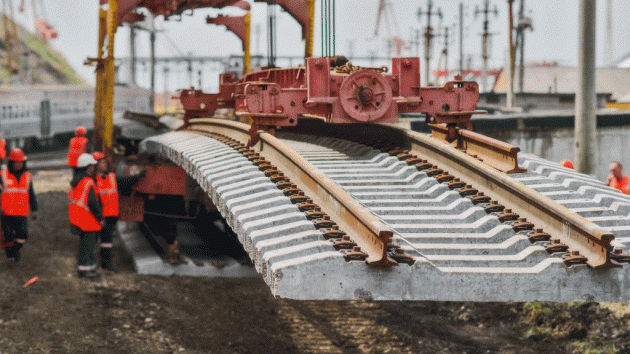Compromise found for feed-in tariffs - CWP not to give up EUR 450 million wind farm project in Kovin
 Thursday, 07.02.2013.
Thursday, 07.02.2013.
 16:29
16:29
Investors in renewable energy sources were very worried in 2012 because the state announced feed-in tariff cuts, and certain investors in renewable energy sources even about mentioned the possibility of giving up their investment in Serbia. Regulations on incentives for privileged electricity producers were finally adopted in late January. A positive novelty is that the amount of incentives will be adjusted to the Eurozone inflation once a year. The fact that the duration of incentives is still 12 years suits investors, but neither a lower purchase price nor new quotas are approved of by them.
Although new Regulations lowered the purchase price for electricity from wind generators from 9.5 to 9.2 euro cents, people at the Serbian Wind Energy Association (SEWEA) are satisfied because the Energy Ministry has accepted investors` proposal to index that reduced feed-in tariff to the eurozone inflation.
- That move was of crucial importance for investors, given that otherwise they would be unable to implement their projects. The feed-in tariff is acceptable when indexed to the inflation rate in eurozone. The Ministry has found an appropriate compromise in this regard, and it serves as an excellent example of cooperation between the government and the association of investors. This concretely ensures that the tariff won`t be effectively reduced every year. In other words, if you guarantee certain price for the following 12 years and choose not to index it to the inflation rate, that really means that the tariff will be getting lower every year - said people at SEWEA.

In October 2012 Continental Wind Partners announced the possibility of giving up the construction of a wind farm in Kovin if feed-in tarrifs were lowered. However, as eKapija learned, the US company is not going to abandon this EUR 450 million worth of investment.
- If the tariff remained at 9.2 euro cents and was not indexed to the inflation rate, we would probably have to discontinue our project. In that case, return on investment would be too small for banks to back us up. An excellent news is that the Ministry has agreed to index the feed-in tariff to the inflation rate, allowing us to keep implementing our investment – Ana Brnabic, project director at Continental Wind Partners, told eKapija.
By the end of 2015 the government will subsidize the purchase of electricity from wind turbines with the total capacity of up to 300 MW, and that quota will be increased by additional 200 MW with the wind generators built by 2020.
- We believe that the quota is too low. It will preclude the construction of some power plants and discourage new investments. For the sake of comparison, Bulgaria currently has wind turbines with the total installed capacity of 800 MW, Croatia has about 200 MW wind generators, Hungary 550 MW, Romania 2,300 MW, Greece 1,700 MW. We hope that the Energy Ministry will remain open to dialogue about the quota after 2015 because we believe that Serbia can significantly benefit from these investments and that the 200 MW installed capacity for wind turbines in the period 2016-2021, when the rest of the world will be focused on renewable sources of energy, is insufficient for a country with a significant wind potential - Brnabic explained.
People at SEWEA pointed out that the quota reduction would have an adverse effect on the arrival of investors.
- Unfortunately, we failed to find a compromise with the Ministry regarding the quota for the purchase of energy from wind generators, which is set at 500 MW, with 300 MW as the limit by 2015, meaning that some investors working on projects for several years will not be able to build new turbines and that new investors won`t come to Serbia. We also believe that if the quota is not increased, Serbia will probably fail to achieve its goal to have electricity from renewable energy sources account for 27 percent of the country's total energy consumption by 2020. We hope that the Ministry will remain open to further talks on this issue so we could find the most acceptable solution for raising this quota after 2015 - said people at SEWEA.
SEWEA gathers five companies and represents investors from Serbia, Russia, the USA, Italy and the Netherlands. They have announced that the construction of the first wind farm in Serbia will commence in 2013.
Suzana Obradovic
 Ministarstvo rudarstva i energetike Republike Srbije
Ministarstvo rudarstva i energetike Republike Srbije
 SEWEA Srpsko udruĹľenje za energiju vetra
SEWEA Srpsko udruĹľenje za energiju vetra
 Energowind d.o.o. Vršac
Energowind d.o.o. Vršac
 CWP
CWP
 MK-Fintel Wind d.o.o. Beograd
MK-Fintel Wind d.o.o. Beograd
Most Important News
06.04.2024. | Agriculture
Preconditions for Placement of Fresh Blueberries and Dried Plums in Chinese Market Secured

16.04.2024. | News
Jovan Ciric, Leasing Director Retail MPC Properties – MPC Echo symbolizes our desire for good ideas and innovative endeavors to spread freely and bring about positive changes

16.04.2024. | News
10.04.2024. | Finance, IT, Telecommunications, Tourism, Sports, Culture
Creative Industry – What This Serbian Economy Sector Worth EUR 2 Billion Encompasses

10.04.2024. | Finance, IT, Telecommunications, Tourism, Sports, Culture
24.04.2024. | Construction, Healthcare
Price of construction of Tirsova 2 increases to EUR 141.6 million – Contract awarded to consortium of 10 companies

24.04.2024. | Construction, Healthcare
16.04.2024. | News
Economy Fair in Mostar opens – 26 companies from Serbia exhibiting

16.04.2024. | News
24.04.2024. | Construction, Transport
Dates of publishing of tenders for construction of three sections of fast railroad from Belgrade to Nis known

24.04.2024. | Construction, Transport


 Izdanje Srbija
Izdanje Srbija Serbische Ausgabe
Serbische Ausgabe Izdanje BiH
Izdanje BiH Izdanje Crna Gora
Izdanje Crna Gora


 News
News






